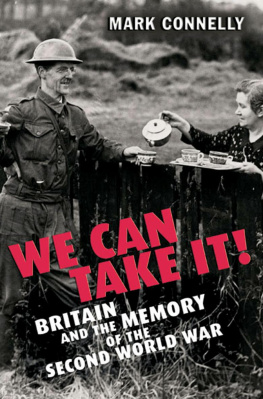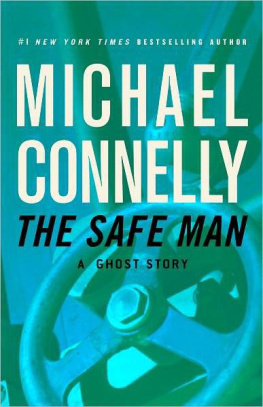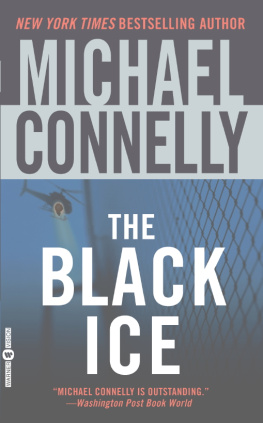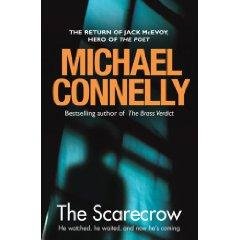ACKNOWLEDGMENTS
Many people contributed in many ways to the writing of this book. Members of my family never flagged in their encouragement. My mother, Irene F. Connelly, deserves special recognition in this regard, which is registered on the dedication page. In addition, my aunt, Eleanor C. Williams, proficiently proofread an early draft.
The history department at Rutgers University provided a most congenial environment for scholarly pursuits. Gerald N. Grob read my early attempts at dealing with these issues and used his broad knowledge of American social history to help me in defining my thinking about them. James W. Reed spent more time with these materials than I ever had a right to expect, and his comments and advice were invaluable.
James L. Wunsch read the manuscript with a critical eye and offered numerous suggestions for improvement. Readers who are further interested in the concerns raised here are urged to consult his own fine study of prostitution in American society, which offers numerous original and perceptive insights and observations.
The specialist readers for The University of North Carolina Press each responded with a thorough and trenchant critical appraisal. The support and encouragement of both of these senior scholars was most welcome.
Walter J. Petry, Jr., who first pointed me toward the study of history, supported my efforts at writing the book at every stage of the way. His counsel was greatly appreciated.
Norman Miller, wordsmith extraordinaire, wielded his knowledge of the art of writing to correct and improve several successive drafts of this study. His attention to matters of style and substance was of the highest order.
The staff of The University of North Carolina Press saw the book through the many stages of publication with the highest degree of professional concern and competence. Executive Editor Lewis C. Bateman was constant in his support, Sandra Eisdorfers supervision of the editing and proofreading was superb, and Janis R. Bolsters skilled and meticulous copy editing improved the manuscript immeasurably.
My greatest intellectual debt is to Warren I. Susman. His insights into the past, and its relationship to the present, influenced to a large degree whatever understanding I possess about American History.
INTRODUCTION
Tonight I saw some of the whore-house districtfrom the outside, & amateurishly.An enormously long dance hall, Thalia[,] with a free vaudeville program; a search-spot-calcium light flashing from the rear thru a dusky 100 feet to fall on the twinkling legs of a soubrette. Orchestra of 1012 pieces, but cracked plaster on the wall behind the stage. Then the lit[e]s turned on for dancing by the great crowd of muckers, soldiers sailors etc. with whores, who couldnt pass beyond the bar by the rail. Announcers & waiters w[ith] eye shades. Whores leaning over the rail coaxing me Oh you Gingerlongthin. Free balcony w[ith] drinks. Long line of gallery booths one side.... Reg[ular] vaudeville program.Another dance hall with small stage; whores leaning over swinging gates only.
Sinclair Lewis, San Francisco, 1909
It was hard for anyone, even the most naive visitor from some provincial hamlet, to miss them. They were known to all, those who cared to know and those who did not, certain streets and certain blocks in certain parts of town. During the first two decades of the twentieth century there was at least one red-light district in virtually every American city with a population over 100,000 and in many of the smaller ones, too. Chicago and New York, as befitted their eminence, had several each.
Many Americans undoubtedly considered prostitution an unfortunate but inevitable part of social relations; it was, after all, hardly a new problem. Thus, during much of the progressive era, urban prostitution was tacitly tolerated, relatively undisturbed, and often tightly woven into a web of payoffs and corruption involving municipal officials, political machines, the police, and others who filled their pockets with the profits that prostitution generated. It was a time when the house of casual pleasure was still almost as much a part of social life as the cocktail lounge is today, when red-light districts were as fundamental a part of the urban scene as cobblestones, trolleys, sweatshops, and tenements. The Tenderloin, the Levee, Storyville, and the Barbary Coastthe famous vice districts in New York, Chicago, New Orleans, and San Franciscohave become part of our urban folklore, memorialized in novels, memoirs, popular histories, and films.
Less well remembered, but of equal historical importance, is the great national alarm that the open existence of the social evil prompted between the turn of the century and World War I. To many vocal and influential individuals and groups, prostitution appeared as an ominous symptom of an unsettling and systemic social crisis. This study offers a reconstruction and interpretation of that intriguing episode in American history.
Concern about prostitution existed, of course, before the progressive era. It is a matter of record, for instance, that by the mid 1650s the city upon a hill more commonly known as Boston sported a brothel run by one Dermin Mahoone. The divines, at least in public, did not look upon Mahoones calling as an auspicious sign for the commonwealth. Throughout the colonial era, American communities were very concerned with enforcing moral codes dealing with a wide range of illicit sexual behavior. In the eighteenth and well into the nineteenth century, this community concern often assumed extralegal dimensions, in the form of whorehouse riots. Annoyed citizens took to the streets to ransack and torch brothels in Boston in 1734, 1737, and 1825; in New York City in 1793 and 1799; in St. Louis in 1831; and in Chicago and Detroit in 1855.
During the early nineteenth century, however, a new approach to the problem of prostitution emerged, influenced both by evangelical and perfectionist notions of social reform and by the rate of urbanization, which made prostitution more noticeable and concentrated in American cities. In the 1820s and 1830s, moral reformers, aroused over what appeared to be rampant immorality in the cities, formed organizations, such as the New York Magdalen Society, dedicated to the moral and social rehabilitation of prostitutes and the prevention of sexual lapses. But the issue of prostitution was at most a secondary issue in the antebellum years; it was overshadowed by the slavery controversy and its political implications and, to a lesser extent, by the temperance movement.
In the decades after the Civil War, prostitution in the cities continued to be a focus of concern and prompted what has been called a purity crusade for the regeneration of American sexual morality. This movement emerged in the 1860s and 1870s when womens groups, former abolitionists, temperance organizations, and ministers joined together to oppose the municipal regulation and medical inspection of prostitutes in cities including New York, Chicago, and St. Louis. On one side of the controversy were the regulationistsusually municipal officials, public health officers, the police, and some physicianswho felt that prostitution would always exist and concluded that medical inspection was the only way to protect the public from the contagion of venereal disease. The purity forces totally opposed such a plan and viewed any official sanction and licensing of prostitutes as an insult to womanhood, a denial of the civil liberties of the prostitute, an unworkable solution because most prostitutes would never be registered on the official roles, and an endorsement of the double standard of morals. For the purity forces, medical inspection was an immoral compromise with a hideous evil. The most notable such contest occurred in St. Louis in the early 1870s, where purity forces were able to overturn a city ordinance that had instituted a system of medical inspection.












